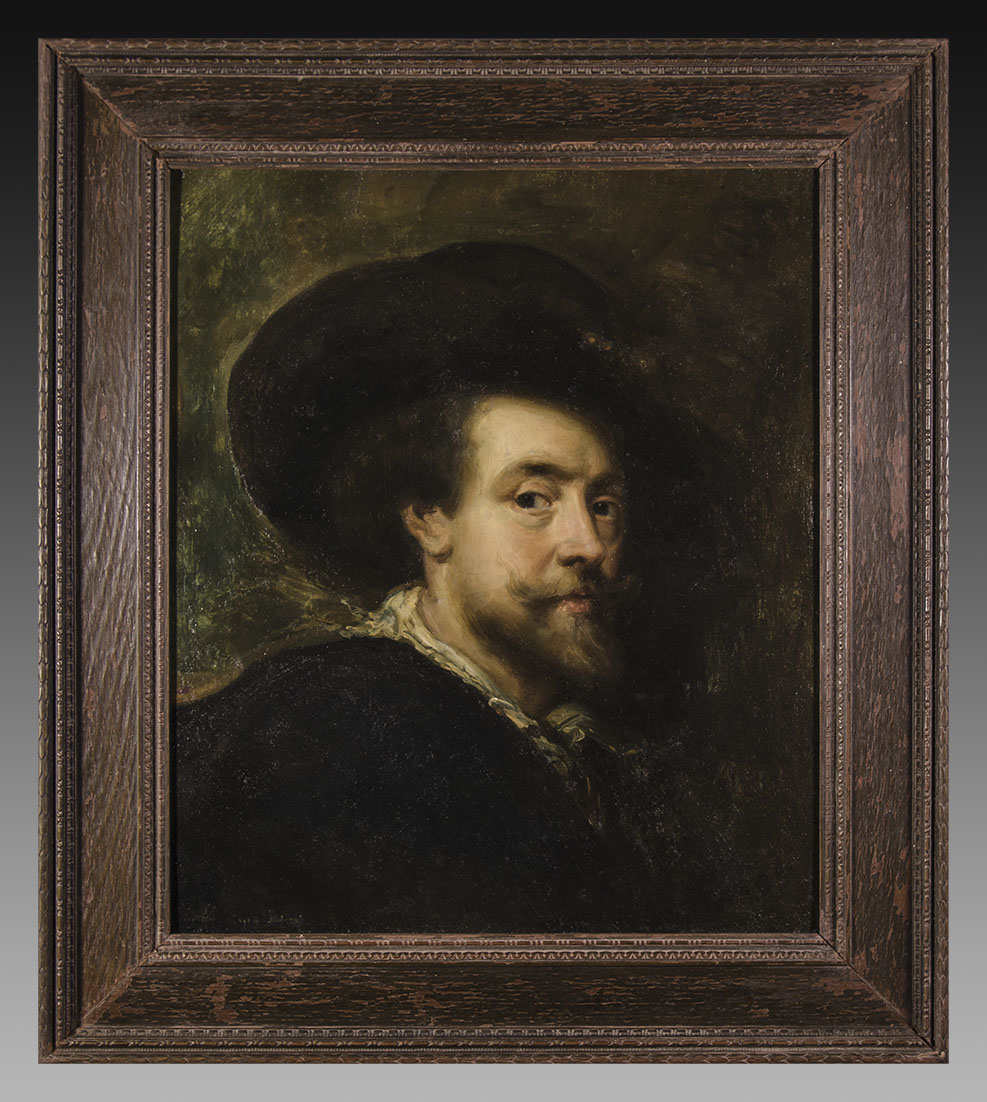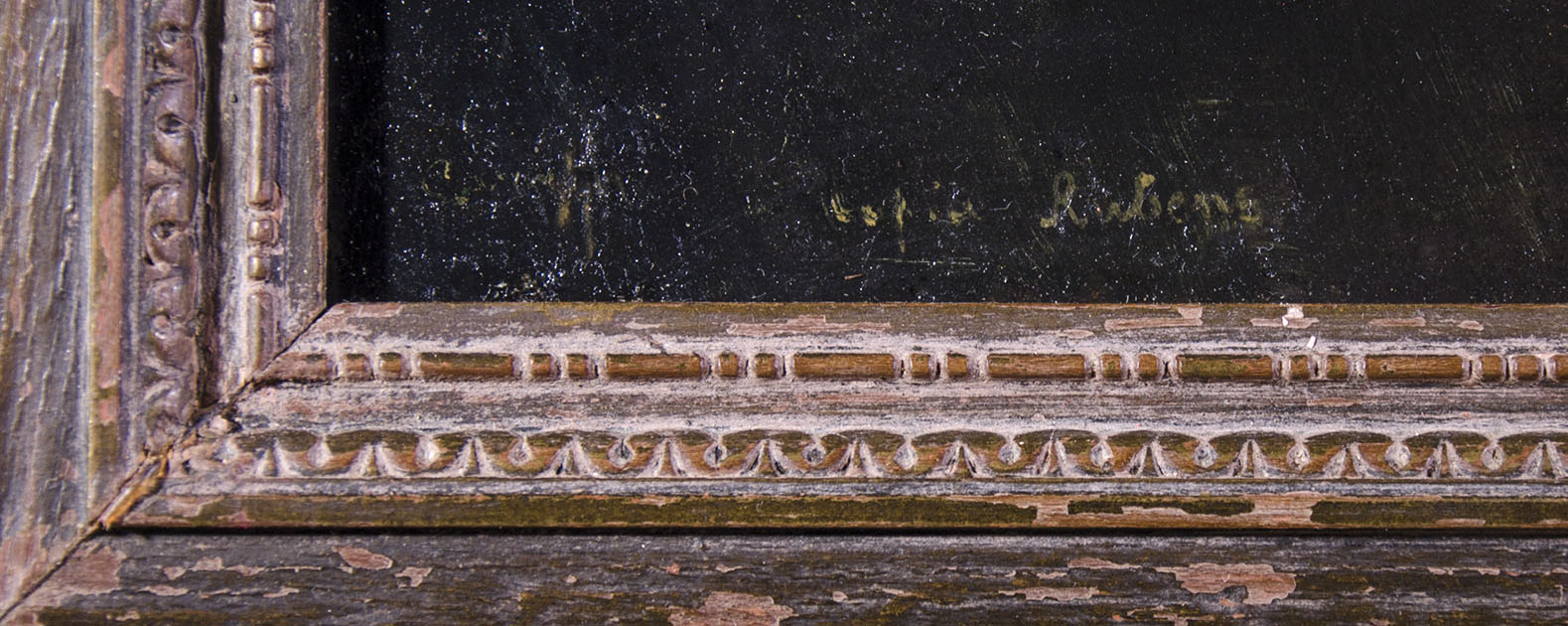BACK TO TOP
ART
THE LIGHTS OF A MASTER
Copy of the Self-portrait of Peter Paul Rubens. Florence, around 1885.
Oil on cardboard. Measurements: 50 x 40 cm. On the painting -towards its base, on the left of the work- the legend: "Caraffa - Copia Rubens". The painting is presented with its original frame.
Emilio Caraffa, thanks to the good friendship of Dr. Eduardo Wilde, obtained a pension to complete in Europe the studies he began in Rosario first - under the tutelage of Professor Vignes - and then in Buenos Aires, together with Francisco Romero at the Sociedad Estímulo de Fine arts. He studied in Naples, from 1885, and then in Rome. As this oil painting of his shows us, he was in Florence, since it is a copy of Rubens's self-portrait with a hat, preserved in the Galleria degli Uffizi
Like most young student artists in the Old World—Caraffa was twenty-three by then—much of his training consisted of copying the great masters. The choice of this self-portrait made between 1623 and 1625 by Peter Paul Rubens (Flanders, 1577–1640) is not accidental, it reveals to us what Caraffa's true desire was, the goal of Spanish art. He did not take the voluptuous and colorful compositions that link flamenco to Titian, Tintoretto or Caravaggio, but the sober self-portrait of him, dressed in black, close to the style of Velázquez, which Caraffa would later study in depth at the Prado Museum.
So we see here Rubens dressed in the fashion of the time, first quarter of the 17th century. He wears a large black hat and a cloak of the same color that only reveals the tip of his white neck. On a background in green and ocher tones, the face that, in profile, looks towards us stands out by contrast. In the exercise of copies in front of the work in museums, the measurements are modified, in this case it presents about 10 cm less per side; the original is 61 x 50 cm. The work is superbly done. The model chosen by Caraffa is one of the versions of the same courtly self-portrait motif, made by that artist. The main one was painted by Rubens for Prince Charles of Wales, then King Charles I, and then others followed, in which the background or direction of the figure changed slightly, as in the one preserved in Rubens' house-workshop. , in Antwerp. Regarding this variant made by Caraffa, although being faithful to the original from the 17th century, it displays the plastic personality of the Argentine artist. As Bondone argues [1] "His were not cold copies, more or less happy reproductions; we can say that he created by copying, since he gave his transfers the echoes of a vibrant spirit."
Emilio Caraffa (Catamarca, 1862 - La Cumbre, Córdoba, 1939) was a painter, conceived by José León Pagano, belonging to the group of organizers, along with Eduardo Sívori and Eduardo Schiaffino [2]. As we already mentioned, he trained in Rosario, in Buenos Aires, and later and for six years in Italy and Spain. Back in Argentina, he developed his artistic and academic career in Córdoba. He founded the Academy of Fine Arts in that city in 1902 and the Museum of Fine Arts in 1912. In the same province he painted figures that embellish the Cathedral and the ceiling of the main room of the Genaro Pérez Museum.
Notes:
1. Tomás Ezequiel Bondone, Caraffa. Editions Caraffa Museum, Córdoba, 2007. Page 57.
2. José León Pagano, El arte de los argentinos, Buenos Aires, author's edition, 1937.
| AUTHOR | EMILIO CARAFFA |
|---|
Are you interested in selling some works?
Send us an email briefly indicating
which works you intend to put on sale, and we will respond. click here
Subscribe to our newsletter to be updated.
Check our Newsletters
